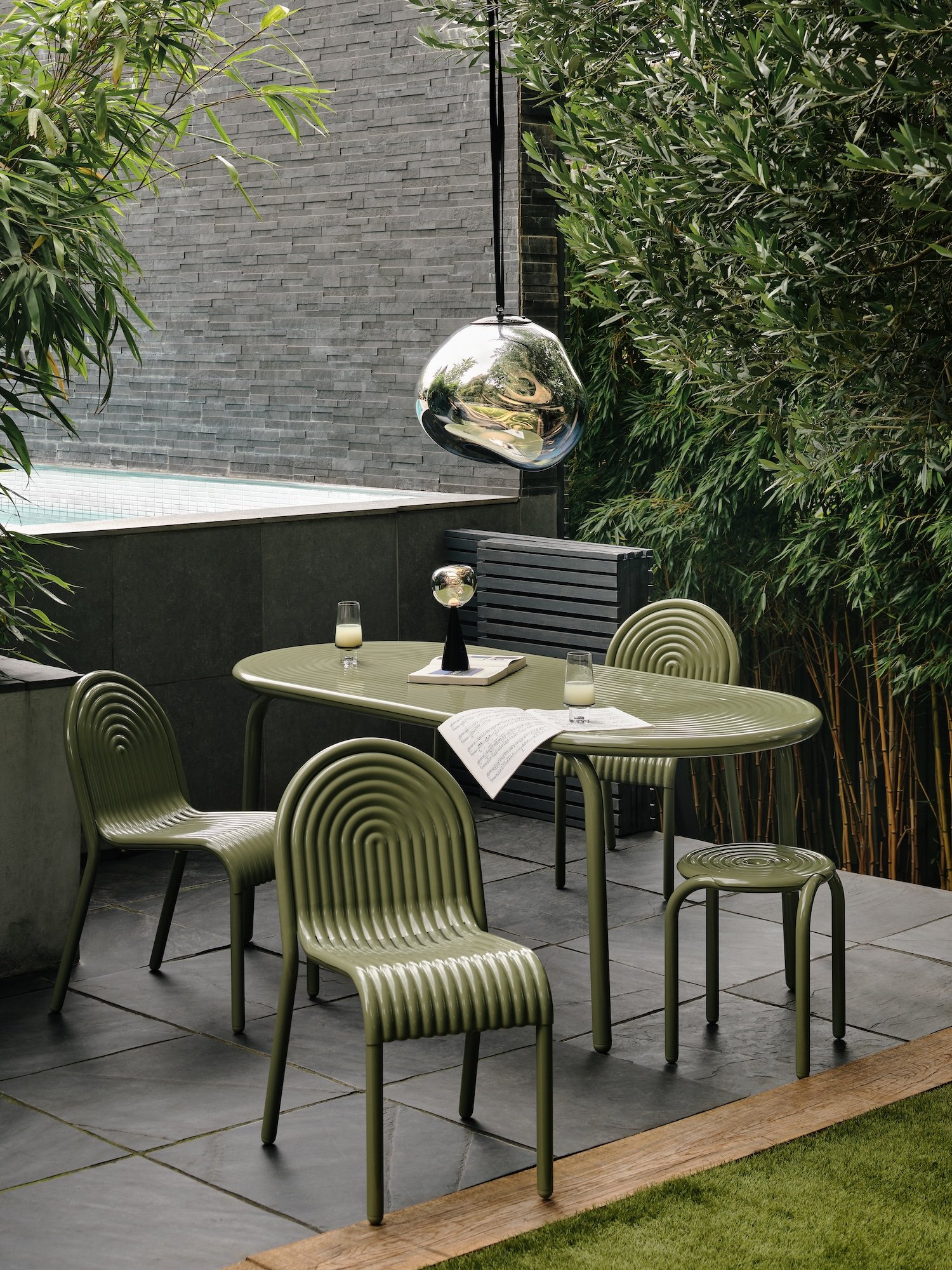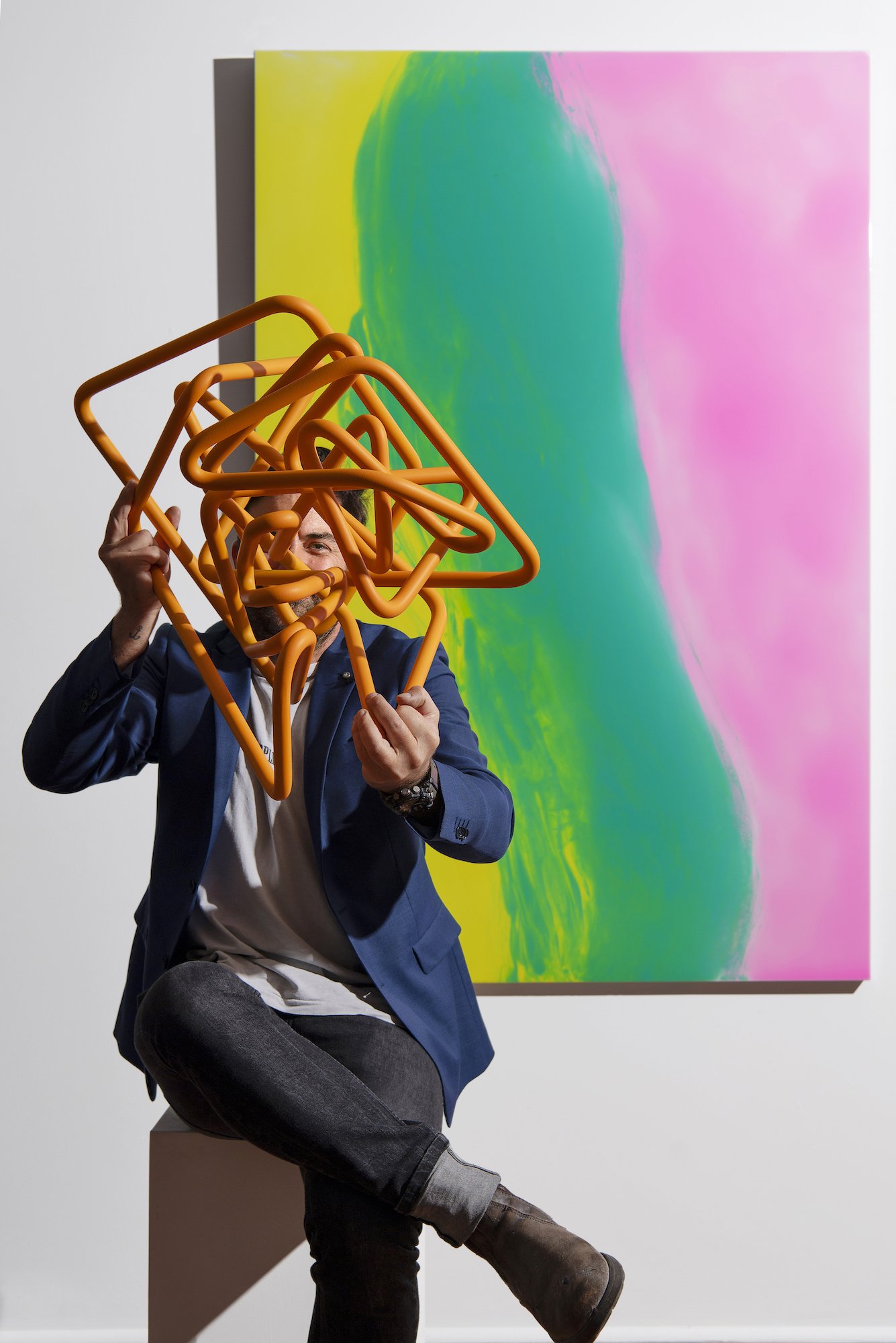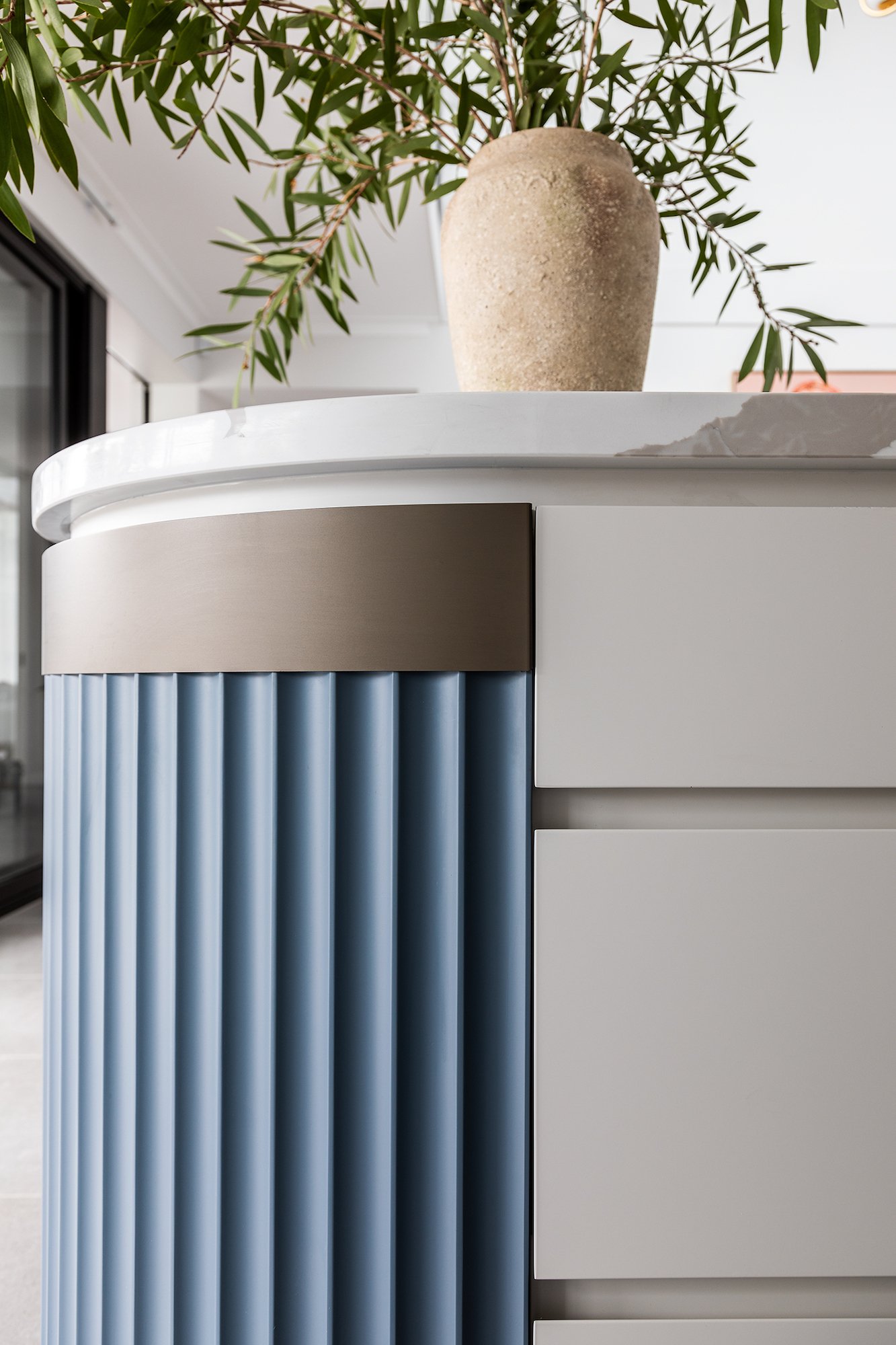5 minutes with Tom Dixon
GLOBAL FIRST: Living Edge launches Tom Dixon’s first outdoor range—GROOVE.
In partnership with LIVING EDGE • Words ELIZABETH CLARKE
After a decade of research and development, Tom Dixon Studio has unveiled GROOVE, his highly anticipated outdoor furniture collection. This marks a significant milestone for the founder and eponymous designer, whose relentless pursuit of innovation in high-tech manufacturing has resulted in a range that combines style, durability, and practicality.
In a worldwide exclusive, Living Edge is the first to launch GROOVE and is now taking pre-orders for a February delivery.
We sat down with Tom Dixon to discuss GROOVE’s genesis, inspiration, form, and function, and why we are rethinking how we utilise our outdoor spaces.
Havenist (H): Tom, congratulations on GROOVE. It is the perfect collection for the Australian climate and way of life. What prompted you to venture into outdoor furnishings and rethink the way we utilise outdoor spaces?
Tom Dixon (TD): Partly the newfound enthusiasm for the outdoors that happened during COVID (Australians obviously have ALWAYS known this!) and partly because we finally found the right factory!
H: GROOVE draws on the art deco era. What inspired this, and how did you develop its concept and overall direction?
TD: It was not particularly inspired by art deco—it just happens to be a series that is hard to pinpoint from an aesthetic period—I mentioned that it could be seen as art deco, or post-modernist, or machine age, but was equally at home in a variety of different setting both urban and rural, indoor or outdoor—this chameleon characteristic is often a secret formula that ensures the success of our best-known products.
H: The collection is technologically advanced and driven by high-performance materials. Can you tell us about both and how they influenced your design process?
TD: Most outdoor furniture is in steel or wood, so we were adamant that we wanted to use aluminium for its superior longevity and for its lightness, too. Outdoor furniture should be light enough to move around, to stack easily and to move into sunny spots—so that presented a technical challenge in terms of rigidising a very thin sheet of aluminium and making the TUBE legs and frame blend as seamlessly as possible.
H: What inspired GROOVE’s simplistic and sophisticated colour palette?
TD: Colour is always a very personal choice and there was endless discussion here! But in the end, we chose the Moss and the Putty colours based on an attempt to blend in and to stand out all at the same time!
H: GROOVE is ‘smart’ furniture—designed for ease of use and seamless functionality. How did you ensure its practicality didn’t compromise its aesthetic appeal?
TD: I don’t see practicality/functionality and aesthetics as opposite—in a perfect world one delivers the other! Meaning, if we design something that works in an elegant way with a truth to materials, one should be able to have it all.
H: Light is always so important to you, and you’ve included your iconic MELT shade in the collection. Why did you choose MELT over your other lighting collections, and what does its aesthetic and functionality bring to GROOVE?
TD: Technology has allowed us now to start thinking about lighting in general as portable (just like it was 200 years ago before the popularisation of gas lighting). Everybody seems to be concentrating on small tabletop lamps like you see in restaurants, but we think that it’s time to be bolder—and it made all kinds of sense to start off with MELT our best-selling lamp—what hasn’t been shared properly is that this lighting module can be used with a whole host of our light shades, including MIRROR BALL and GLOBE, so we think that portability in all manner of illumination is one of the big upcoming trends.
H: Sustainability is an integral part of design. As a designer, how do you consider it in your work, and how is this reflected in GROOVE?
TD: In the sustainability narrative, we have concentrated on longevity above everything—in the complicated and confusing world of trying to act in a more responsible way, the clearest argument is to only make products that can survive for a long time—in materiality, in build quality and also in terms of style (not to make things that will be discarded). On top of that, aluminium is naturally recycled as it is too valuable to throw away and is infinitely recyclable—an almost unique attribute.
H: Tom, you’re constantly pushing the boundaries of design and engineering. What’s next for your studio?
TD: We have so many things that we would love to design! More fun in Australia, I hope—more partnerships, more interiors, and more categories.
"I don’t see practicality/functionality and aesthetics as opposite—in a perfect world one delivers the other! Meaning, if we design something that works in an elegant way with a truth to materials, one should be able to have it all."
—TOM DIXON






































